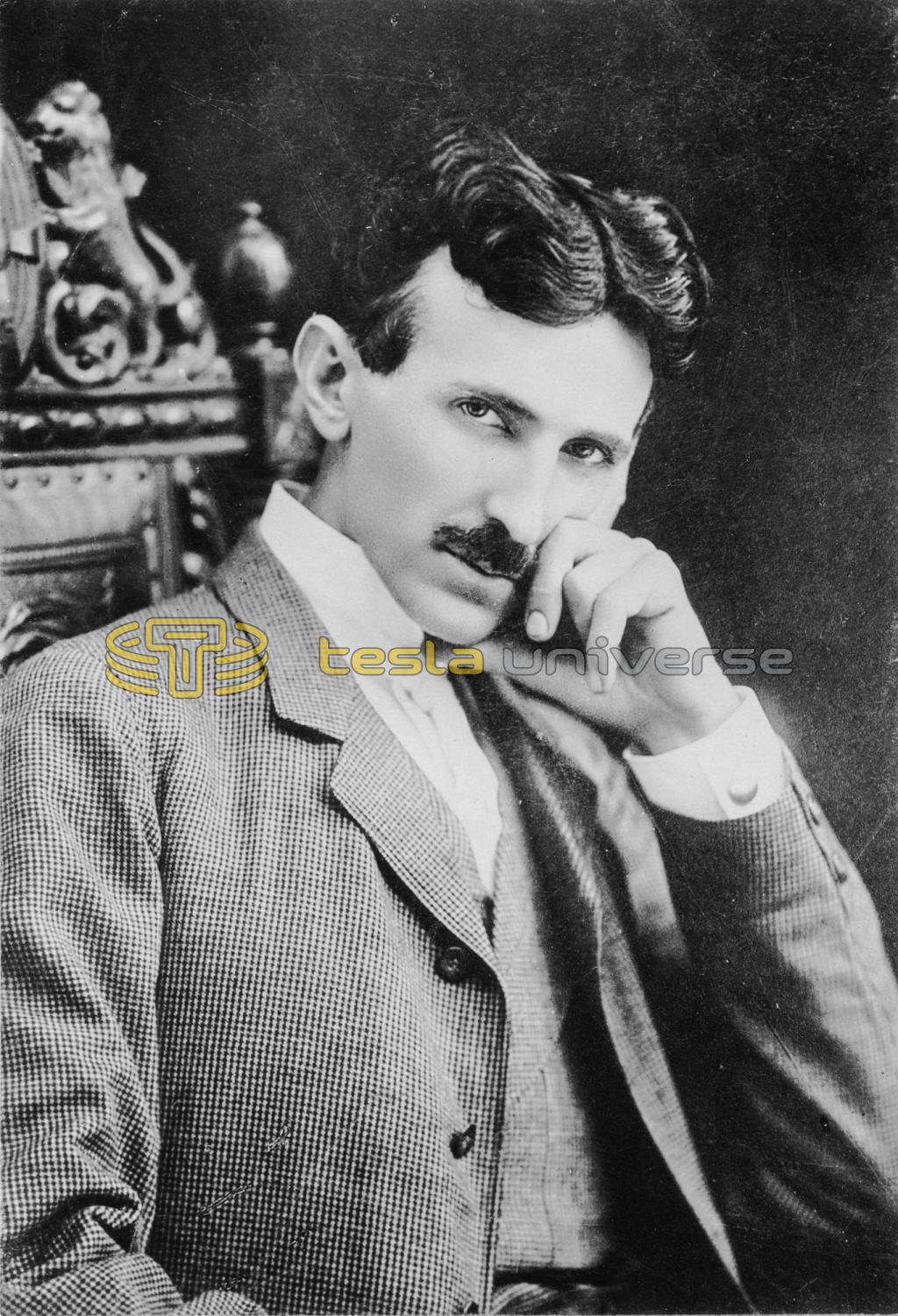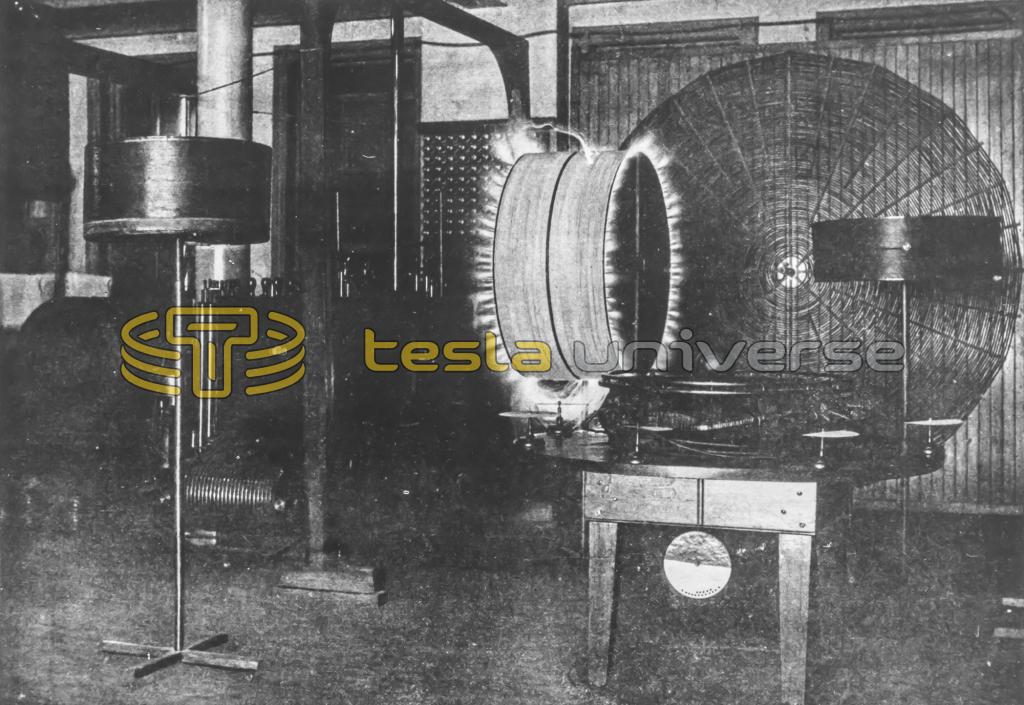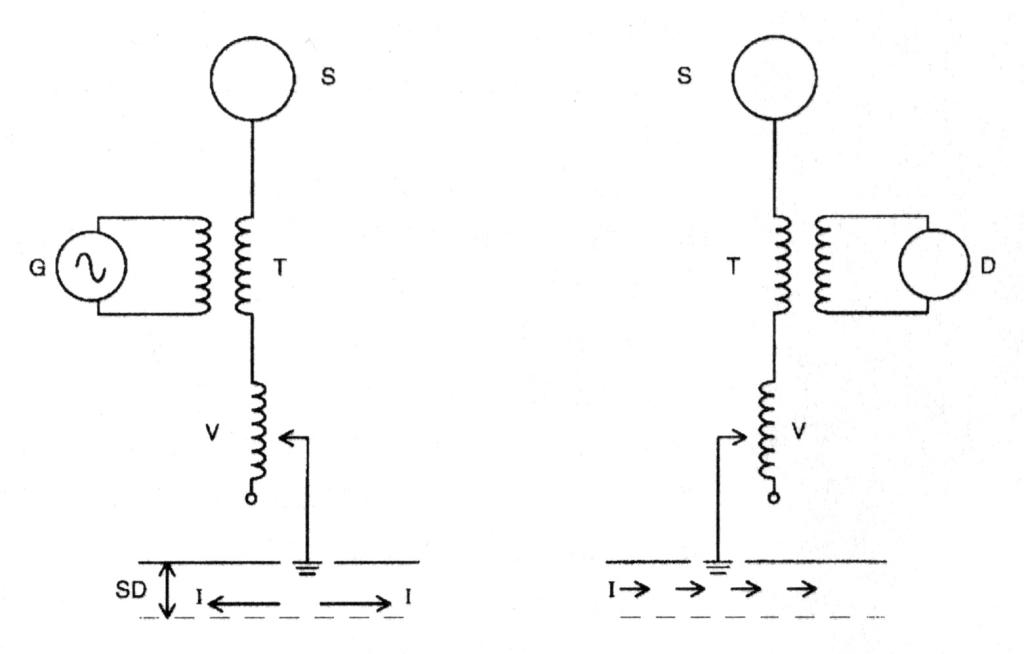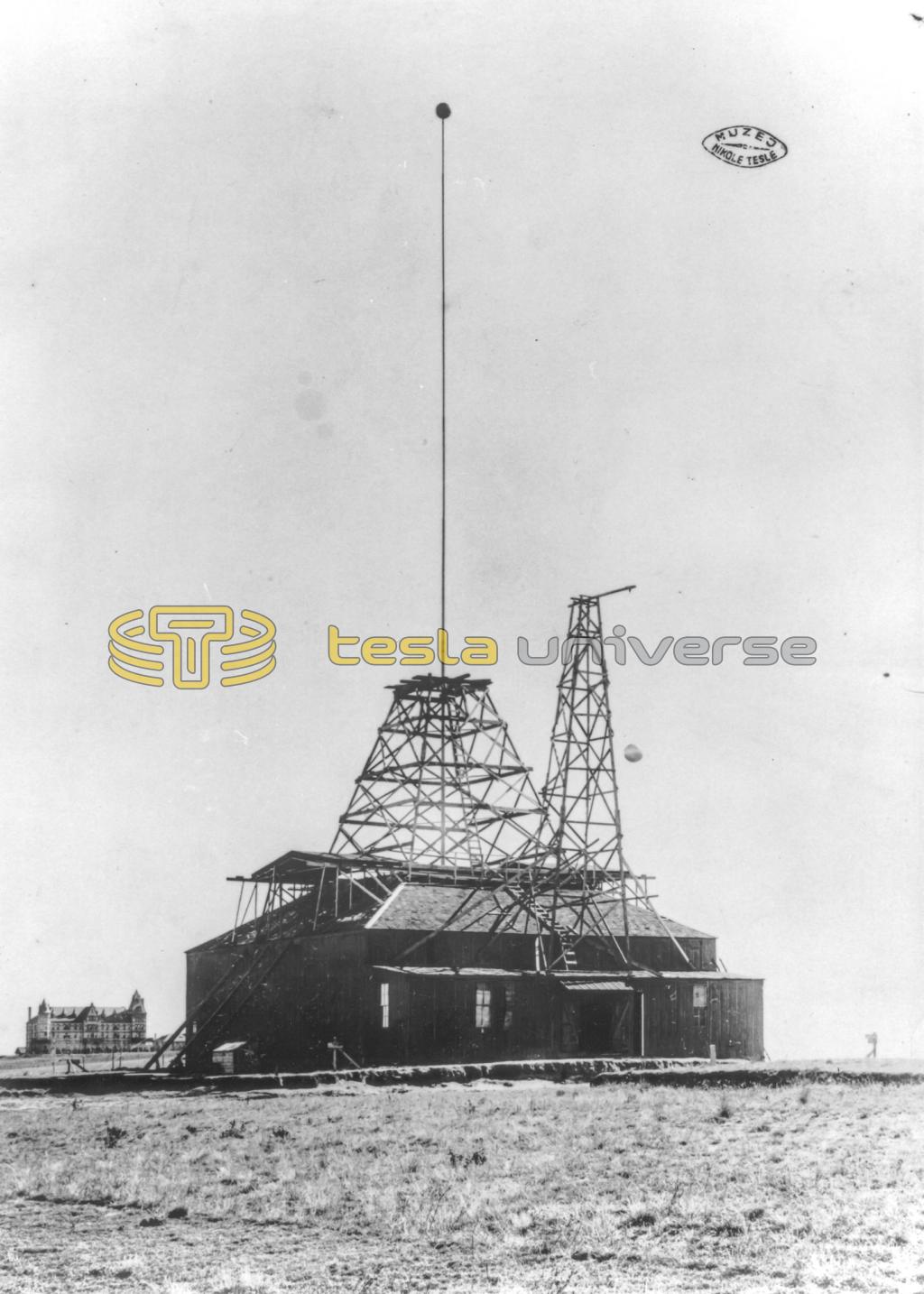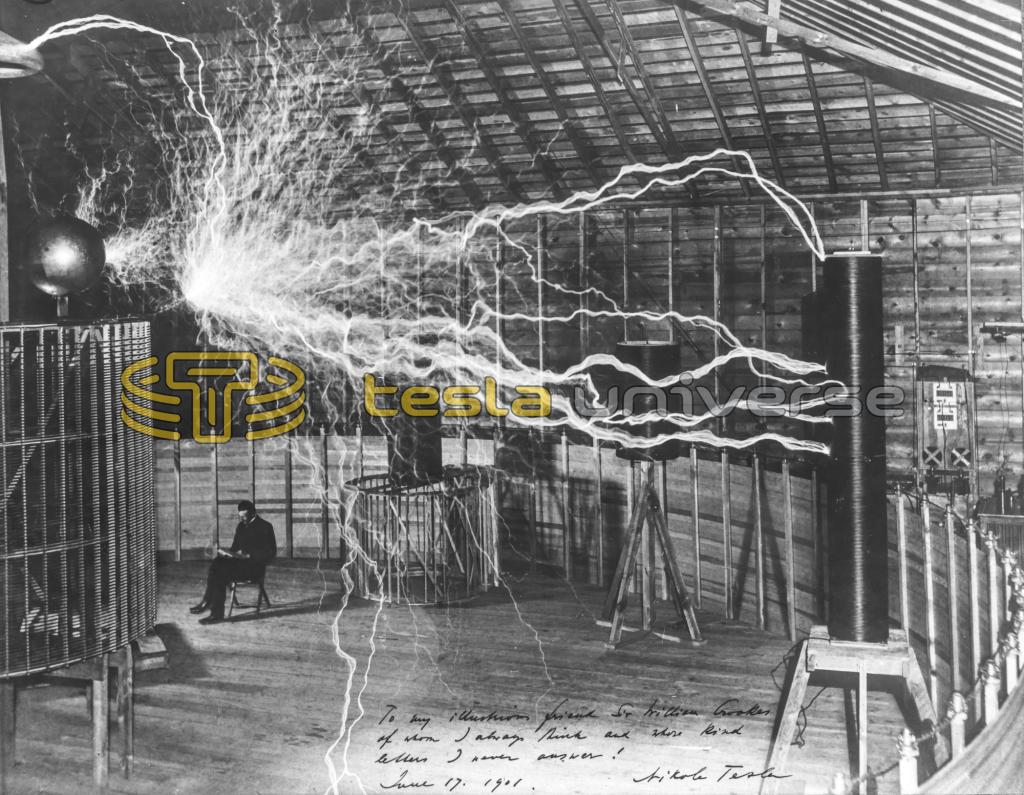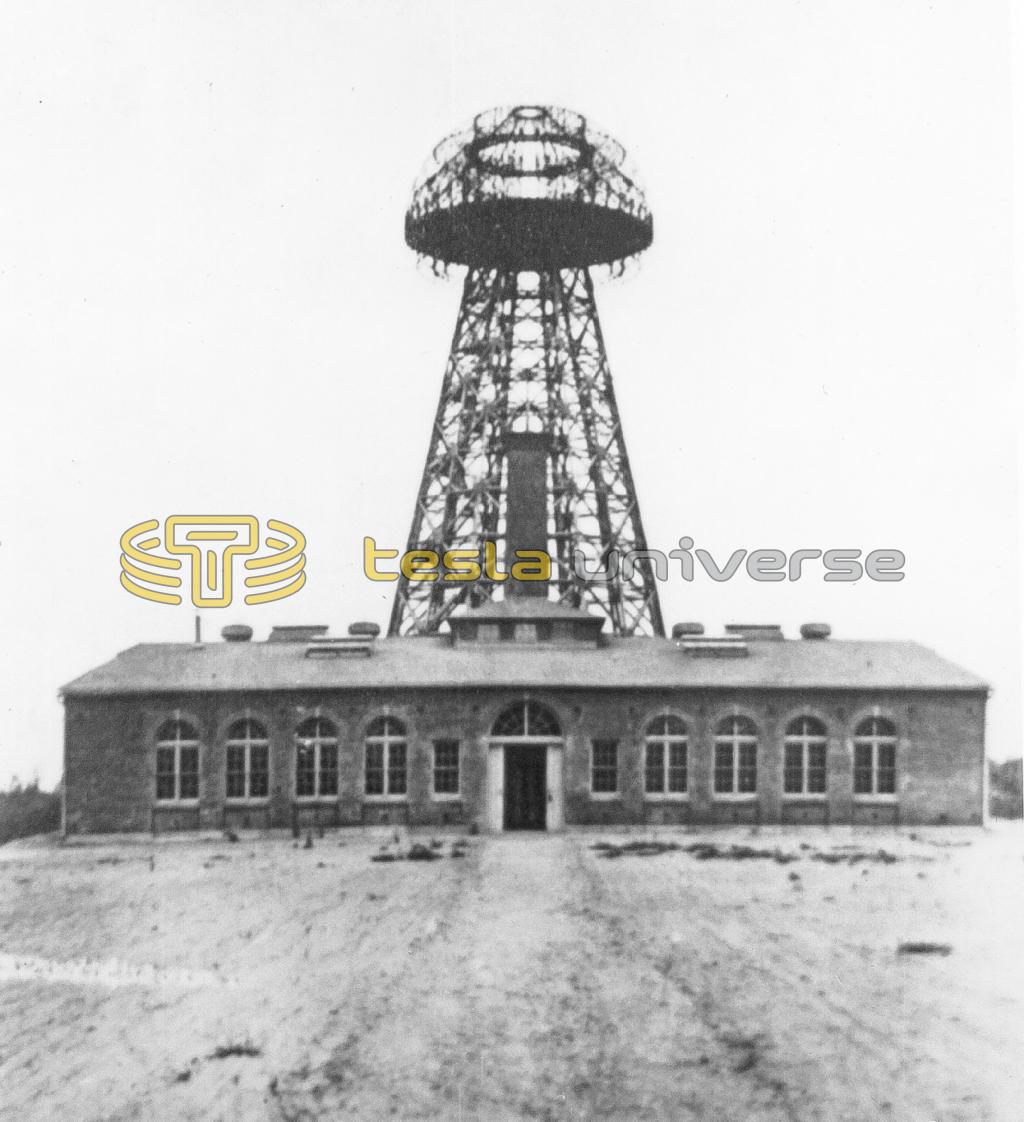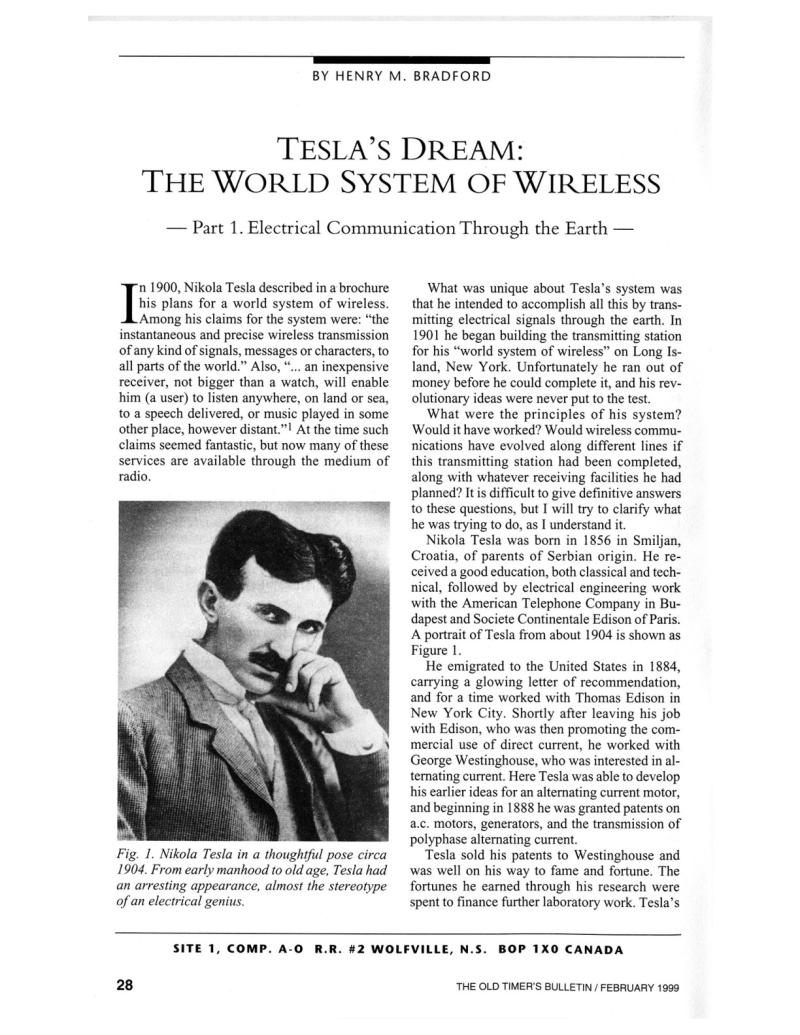
Nikola Tesla Articles
Tesla's Dream: The World System of Wireless - Part 1
Electrical Communication Through the Earth
In 1900, Nikola Tesla described in a brochure his plans for a world system of wireless. Among his claims for the system were: “the instantaneous and precise wireless transmission of any kind of signals, messages or characters, to all parts of the world.” Also, “... an inexpensive receiver, not bigger than a watch, will enable him (a user) to listen anywhere, on land or sea, to a speech delivered, or music played in some other place, however distant.”1 At the time such claims seemed fantastic, but now many of these services are available through the medium of radio.
What was unique about Tesla’s system was that he intended to accomplish all this by transmitting electrical signals through the earth. In 1901 he began building the transmitting station for his “world system of wireless” on Long Island, New York. Unfortunately he ran out of money before he could complete it, and his revolutionary ideas were never put to the test.
What were the principles of his system? Would it have worked? Would wireless communications have evolved along different lines if this transmitting station had been completed, along with whatever receiving facilities he had planned? It is difficult to give definitive answers to these questions, but I will try to clarify what he was trying to do, as I understand it.
Nikola Tesla was born in 1856 in Smiljan, Croatia, of parents of Serbian origin. He received a good education, both classical and technical, followed by electrical engineering work with the American Telephone Company in Budapest and Societe Continentale Edison of Paris. A portrait of Tesla from about 1904 is shown as Figure 1.
He emigrated to the United States in 1884, carrying a glowing letter of recommendation, and for a time worked with Thomas Edison in New York City. Shortly after leaving his job with Edison, who was then promoting the commercial use of direct current, he worked with George Westinghouse, who was interested in alternating current. Here Tesla was able to develop his earlier ideas for an alternating current motor, and beginning in 1888 he was granted patents on a.c. motors, generators, and the transmission of polyphase alternating current.
Tesla sold his patents to Westinghouse and was well on his way to fame and fortune. The fortunes he earned through his research were spent to finance further laboratory work. Tesla’s reputation was further enhanced when Niagara was harnessed to generate alternating current in 1895, and the Westinghouse alternating current system, rather than Edison’s direct current technology, became the common method of electric power distribution.
In 1888 Tesla opened the first of a series of four laboratories in New York City, in which he extended his alternating current experiments to higher voltages and frequencies. (See Figure 2.) In the next few years he developed high frequency alternators, and methods of converting direct or low frequency alternating current to high frequencies with the aid of capacitor discharges, “breaks,” (interrupters), and resonant circuits. Apparatus of this type would later serve as the oscillator for his wireless transmitters. He also invented the “Tesla Coil,” which was a resonant, high voltage, high frequency transformer.
During these experiments he noted that alternating currents do not necessarily require complete circuits, but can flow along single wires if “drawn” by a capacitance. For example, if one terminal of a high voltage, high frequency source, were grounded, and a wire were connected to the other (“hot”) terminal, current could be drawn along the wire by the capacitance of a conducting body connected to the other end of it.
If the voltage and frequency were high enough, the capacitance of a light bulb was sufficient to draw enough current to light it. Such phenomena are familiar to radio workers. The capacitance of an isolated conducting body is often called its “self-capacitance,” and the current is called “charging current.” This is the current that flows in an open-circuit transmitting antenna, or gives you a bum if you touch the electrically “hot” parts of a radio transmitter, even if you are isolated from the ground.
Following this line of thought, Tesla considered using the earth as the single conductor and transmitting currents through it for purposes of wireless communication and perhaps even power transmission. His basic idea, as described in lectures at Philadelphia and Saint Louis in 1893 2 , was to connect a high frequency generator (or oscillator) between the ground and a spherical elevated conductor.
The e.m.f. of the generator would apply alternating charges of equal magnitude and opposite sign to the sphere and the Earth, and the charging current would spread out through the earth from the ground terminal. It is this current, and/or its associated electrical disturbance, that Tesla intended to use for wireless signalling and possibly power transmission.
Tesla believed that the entire Earth could be set into oscillation by this means with little dissipation of energy. Although the conductivity of soil and water is orders of magnitude smaller than that of a metal, the resistance between the transmitter ground terminal and a distant point would be very small on account of the large cross-sectional area of the Earth. Tesla apparently was aware that the high frequency currents would be confined to a layer near the surface of thickness equal to the “skin depth,” but even this layer would have an enormous cross-sectional area. He thus concluded that energy could be transferred efficiently from the transmitter to a resonant receiver anywhere on the globe, and that surface anomalies such as mountains and buildings would absorb little of this energy because they would be non-resonant.
The current that would flow to the transmitter sphere and also spread out in the earth from the ground terminal would be given by:
I = 2πfCV,
where I is the current in amperes, f is the frequency in hertz (cycles per second), C is the self-capacitance of the sphere and Earth in series (approximately equal to that of the sphere alone) in farads and V is the voltage between the sphere and the ground. In this expression the relatively small impedance of the ground connection has been neglected. The self-capacitance of a sphere is approximately one picofarad per centimetre of radius.
For example, using numbers appropriate to the Long Island station that he built later, a generator e.m.f. of ten million volts would produce a transmitter sphere current of about 700 amperes at a frequency of ten kilohertz. (Actually, the earth current might be many times larger, as will be explained in Part 2 of this article). The high voltage required to obtain a large current motivated Tesla to produce ever greater voltages in his laboratories, resulting in spectacular electrical discharges several yards in length.
During this period, Tesla dressed elegantly, ate at night in the best restaurants, and hobnobbed in high society, partly to attract the attention of potential investors.3 In spite of allowing himself these few worldly pleasures, he never married, and maintained an ascetic devotion to his work.
Tesla’s ideas about the form that his wireless transmitters and receivers would take were now crystallizing. They were described in patents applied for in 1897 and granted in the United States in 1900.4 A simplified version of his apparatus is shown in Figure 3.
Basically, the transmitter consisted of a source of high voltage, high frequency, alternating current applied between an elevated conducting sphere and the earth via an air core transformer. The receiver was like the transmitter in reverse. An elevated sphere was connected to the earth through the primary coil of a transformer, and the secondary coil was connected to the detector. Presumably the primary and secondary circuits of both the transmitter and receiver were tuned to or resonated at the generator or oscillator frequency in communications applications.
Tesla did not expound on the principles of his receiver, but he apparently expected the alternating potential or electric field associated with the earth current to generate a voltage between the ground and the elevated sphere of the receiver. In his patent drawings Tesla showed large loads connected to the output of the receiver because he was still considering the wireless transmission of useful amounts of electric power.
Tesla also considered the possibility of utilizing electrical conduction through the rarefied strata of the upper atmosphere, an idea reminiscent of the experiments of Mahlon Loomis6, and even conjectured that a transmitter for this purpose would produce an artificial aurora. These ideas were reinforced by his experiments on the conduction of electricity through gases at low pressures. However, he did not try to follow this up seriously, probably because it would have required balloons or other access to the upper atmosphere, and he continued to focus his main efforts on conduction through the earth.
Tesla was not the first to try signalling through the earth electrically. Samuel Morse transmitted telegraph signals across a canal eighty feet wide in 1842,5 and William Preece bridged the Solent, a channel several miles wide in England, in 1882.7 Nathan Stubblefield demonstrated a wireless telephone that worked by earth conduction circa 1892.8
However, unlike Tesla’s transmitter with its “monopole” ground terminal, the transmitters in these systems all utilized a complete circuit that passed a current between two ground terminals, and the receivers detected the voltage between a second pair. The main limitation of such systems was that the dipole electric field set up in the earth by the pair of transmitter terminals had an intrinsically short range, and with the instruments then available, signals typically could not be received at distances many times greater than the spacing between the transmitter terminals. Of the early earth conduction schemes, the wireless telegraph and telephone systems of Amos Dolbear, developed in Boston and patented in 1882, most closely resembled Tesla’s concept in principle because they utilized single ground terminals at the transmitter and receiver.9
All of the foregoing systems transmitted raw telegraphic or telephonic signals, what would now be called the “baseband signal.” In Tesla’s system, the alternating e.m.f. supplied by the transmitter was a carrier, and information was to be transmitted on it via amplitude modulation. His plans included modulations carrying telegraphic, telephonic, stock market, picture, time, and coded signals. How well his proposed electromechanical methods of modulation would have worked is debatable, but his ideas certainly were ahead of their time.
Tesla built his last laboratory for wireless experiments near Colorado Springs in 1899 (Figure 4). Here he constructed a metal-covered wooden sphere, about 30 inches in diameter, that could be raised to the top of a 168-foot iron pipe that was insulated from the earth. The primary and secondary coils of his transmitter were made of thick cable. They were fifty-one feet in diameter, and their combined height, or that of their coil form, was nine feet (Figure 5).
An additional resonant coil likely was used to achieve a high sphere voltage, the whole arrangement being called by Tesla a “magnifying transmitter.” (Further details will be included in part 2 of this article.) According to Tesla, up to four million volts could be applied to the sphere, generating earth currents of one thousand amperes. The power was not as large as these numbers suggest because the current and voltage were approximately 90 degrees out of phase.
Tesla did various experiments inside and outside of the transmitter building using resonant coils that would pick up the transmitted energy, lighting bulbs or generating electrical discharges. He later described the signals detected by ungrounded coils as due to induction and of no real value, whereas he attributed signals received by grounded coils to transmission via the earth, and described them as important.
These experiments were carried out within a few miles of the transmitter, and Tesla apparently did not attempt to observe how far away his signals could be received. Consequently, although his Colorado transmitter undoubtedly could have done far better, the greatest distance he ever recorded was thirty miles - observed during earlier experiments at his Houston Street laboratory in New York City.10
Although this was a significant accomplishment, Tesla did not attempt to exploit it commercially, preferring to wait until he had achieved his real goal, worldwide wireless. In retrospect this probably was a great mistake. The lack of demonstrated success in long-range wireless communication or power transmission made it difficult for him to obtain needed financial support later. It also denied him a more prominent place in the history of wireless.11
In Colorado, Tesla also used a receiver like that shown in Figure 3 to record natural electrical disturbances. According to Tesla: “The earth was found to be, literally, alive with electrical vibrations, and soon I was deeply absorbed in this interesting investigation.”12
During these experiments he made an observation that impressed him greatly, and reinforced his belief in the practicality of transmitting signals or power through the earth. A thunderstorm that was moving away from him produced many maxima and minima on his record, and continued to do so even after it had receded to a distance estimated to have been about 200 miles. Tesla interpreted these variations as stationary (standing) waves, possibly due to electrical disturbances generated by the lightning travelling around the whole planet. If this interpretation were correct, global ranges for his system seemed feasible.
Tesla completed his Colorado experiments and returned to New York in 1900. He now felt ready to build a commercial installation to provide the worldwide wireless services quoted at the beginning of this article. The well-known financier, J.P. Morgan, advanced him $150,000 in return for a 51% interest in Tesla’s patents and inventions, and in any future ones related to electric lighting or wireless telegraphy and telephony.13
Tesla obtained a piece of land at Shoreham, Long Island, New York, and in 1901 began construction of a powerful transmitting station called Wardenclyffe, named after the real estate development in which it was located. A one-story brick building about 100 feet square was constructed and equipped as his laboratory, workshop, and power plant for his transmitter.
A sturdy wooden latticework tower about 154 feet (47 metres) high was built, topped by a roughly hemispherical structure, 68 feet (21 metres) in diameter, which was to have been covered with metal plates (the elevated conducting body). See Figure 6. The tower was located about 350 feet (100 metres) from the station building so that there would be no risk of an electrical discharge between the hemisphere and the chimney of the building!
Beneath the tower was a deep shaft containing the ground terminal. This was an iron pipe driven about 300 feet (90 metres) into the ground and well into the water table to provide the transmitter with “a grip on the earth so that the whole of this globe can quiver” (electrically speaking, of course). Presumably, the apparatus which Tesla called a magnifying transmitter, “a peculiar transformer specially adapted to excite the Earth” would have been located in the tower, and the tower covered with an outside wall as shown in an artist’s illustration.14
This is as far as the project got. Tesla had spent all of his money, and could not raise more from Morgan or other financiers. Construction ceased in 1903, and Tesla mortgaged the property. The mortgages were eventually foreclosed, the equipment was stripped from his laboratory, and the tower was blown down with dynamite in 1917.
So ended a dream and a fascinating chapter in the history of communications. Tesla’s last significant work was on a turbine that he invented, but he was unable to exploit it commercially to save the Wardenclyffe project. He died in his hotel room in New York City in 1944. Although the Wardenclyffe tower is long gone, the station building was used commercially until recently, and its restoration for use as a science centre is the goal of the “Tesla Wardenclyffe Project.”15
The premature demise of Tesla’s world wireless system leaves us haunted by what might have been. Would it have worked? If so, would early wireless have evolved along entirely different lines? These and other questions will be examined in Part 2 of this article.
References
- “My Inventions, ” by Nikola Tesla, edited by Ben Johnston: Hart Brothers, Vermont (1982); originally published in Electrical Experimenter (1919); p. 87ff.
- “The Inventions, Researches, and Writings of Nikola Tesla,” by Thomas Commerford Martin: Lindsay Publications Inc. (1988), Bradley, Illinois, originally published in Electrical Engineer (1894); p. 348.
- Tesla - Man Out Of Time, by Margaret Cheney: Dorset Press, New York (1981); chapter 8.
- Nikola Tesla On His Work With Alternating Currents and Their Application to Wireless Telegraphy, Telephony, and Transmission Of Power, Leland I. Anderson, Editor: Sun Publishing, Denver Colorado (1992); p. 98ff. These were patents 645576 and 649621.
- History of Radio Telegraphy and Telephony, by George Blake: Arno Press, New York (1974), originally published by Chapman & Hall Ltd., London (1928); p. 9
- “ ‘Forgotten’ Pioneers of Wireless, Part 2 - Dr. Mahlon Loomis,” by James P. Rybak: The Old Timer’s Bulletin (Antique Wireless Association), vol. 38, No. 3, August 1997.
- Pioneers Of Wireless, by Ellison Hawks: Arno Press, New York (1974), originally published by Methuen & Co. Ltd., London (1927); p. 160.
- “ ‘Forgotten’ Pioneers of Wireless, Part 1 -Nathan Stubblefield’ ” by James P. Rybak: The Old Timer’s Bulletin (Antique Wireless Association), vol. 38, No. 2, May 1997.
- Hawks, ibid., p. 134ff, and Blake, ibid., p. 47ff.
- Anderson, ibid., p. 26ff.
- Tesla alludes to a range of about six hundred miles on page 209 of his article “The Problem Of Increasing Human Energy,” in The Century Magazine, June 1900, but he gives no details. Whether 30 or 600 miles, the fact remains that he did not make a point of publicly demonstrating the ranges of his equipment or marketing small scale systems, and this probably was detrimental to his success in the long run.
- “Prodigal Genius, The Life of Nikola Tesla,” by John J. O’Neill: Ives Washburn, Inc., New York (1944), p. 179ff, quoted from an article in Electrical World and Engineer, May 5, 1904.
- Lightning In His Hand - The Life Story Of Nikola Tesla, by Inez Hunt and Wanetta W. Draper: Omni Publications, California (1964), p. 136.
- Johnston, ibid., p. 89.
- For more details, see the “Tesla Wardenclyffe Project” website <http://pages. nyu.edu/~jas4/>.
